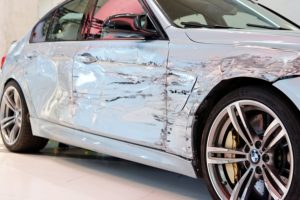Smart cars are set to be the way of the future. Automotive engineering continues to develop new ways that cars can seamlessly assist drivers and decrease collisions.
We’ve been hearing a lot of news lately about self-driving cars. Now, let’s look at some of the innovations that we are more likely to see at the dealership in the near future.
REAR CAMERAS WILL PROVIDE BETTER VISIBILITY
Reversing accidents kill more than 200 people and injure nearly 12,000 each year. A nation-wide law went into effect in May to decrease this type of accident which usually involves pedestrians and children. It requires all new models of cars sold in the country to have rear cameras. This new equipment allows drivers to see behind their car while it’s in reverse thanks to rearview cameras and monitors mounted on the car’s dashboard.
SIDE CAMERAS WILL ELIMINATE BLIND SPOTS
Blind spots may be a thing of the past. Car manufacturers have been working to develop a camera and display system that will reduce car collisions. We’re sure to see more and more integrated sensors and cameras on new cars for sale.
In fact, Mitsubishi Electric unveiled a windowless car this year that has cameras so drivers can see all around, including typical blind spots, on a dash screen. This innovative model also uses high-tech cameras that improve obstacle detection by up to 81%. It can identify cars, trucks and animals up to 100 meters away. Volvo has also developed a blind spot information system to help drivers spot vehicles moving in the same direction.
HEADLIGHTS WILL PREDICT TURNS
By turning or widening the area illuminated by the car, adaptive headlights help drivers to see around curves on dark roads and significantly decrease nighttime accidents. These lights make it easier to spot a deer in the road or an oncoming vehicle around the bend. Sensors monitor the vehicle’s speed, movement of the steering wheel and the car’s trajectory. Then, electronic controls move the headlights in response.
Adaptive headlight systems have become nearly standard for some European car manufacturers in the last five years. Though an outdated law in the U.S. has inhibited these modern lighting systems from being sold here, it’s only a matter of time until they are.
CARS WILL BRAKE AUTOMATICALLY
Rear-end collisions are the most common type of auto accident in the country. That’s why some recent technology aims to prevent them and collision avoidance systems have quickly developed into a life-saving car feature. Forward-collision warning systems let drivers know when there is a risk of a crash. Plus, automatic emergency braking can react when drivers fail to stop in time.
Testing shows that, when combined, collision warning and automatic braking systems can reduce rear-end accidents by 50%.Luckily, crash prevention systems will become standard soon. The National Highway Traffic Safety Administration (NHTSA) has set 2022 as the deadline for U.S. carmakers to implement it.
STEERING WILL BE SAFER
Electronic Stability Control systems have been around for more than a decade, but the technology has been continually refined in order to prevent car accidents. An ESC system senses when a car is skidding out of control or losing traction. It works together with the anti-lock brake and traction control systems to immediately correct the driver’s steering and regain control. It can be really helpful for preventing car collisions when roads are slippery.
New car models will be hitting the streets this year with more advanced features. Combining obstacle detection with active steering systems, a new model from Lexus, for example, will be able to brake and navigate around pedestrians when needed.
CARS WILL ALERT DRIVERS
Integrated sensors are used on some newer models to help prevent collisions. Lane departure warning systems are one example. A signal or vibration alerts the driver when the car seems to drift out of its lane. Lane departure prevention systems go one step further. They take over the steering to keep the car in the correct lane.
Driver assistance systems have been shown to reduce accidents by 11%. They are already required for some larger vehicles in certain areas. So, it’s likely that they will soon be a standard safety feature for all cars.
PARKING WILL BECOME EASIER
Beyond parking sensors, rear cameras and self-parking systems, some cutting-edge cars will actually help you find a parking spot. This year, BMW and Parkmobile are expected to release an integrated app that shows the coordinates of free parking spaces around the city. Users will even be able to reserve spots remotely. It may not help you avoid a crash, but it’s definitely a handy gadget.
APPS WILL HELP DISTRACTED DRIVERS
Distracted driving is a big concern on the roads these days and tech companies have taken note of the problem. Soon there will be a range of apps and smartphone features to help decrease the number of collisions caused by distractions.
There are already some devices available, like CellControl DriveID, that can be mounted inside the car to block drivers from texting. Some allow parents to monitor their children’s smartphone activity while in the car or block usage when the car is moving. Look out for new applications and basic phone settings, like Apple’s ‘Do Not Disturb’ function, that block incoming message alerts and calls while driving.
TRUST COLLISION 2000 FOR YOUR COLLISION REPAIRS





